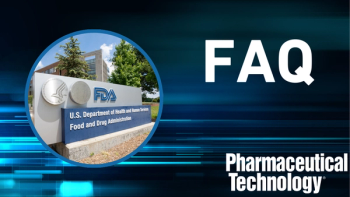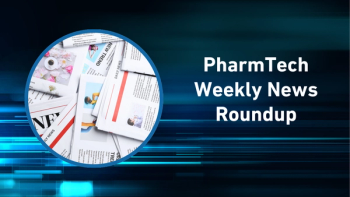
Everything to Know About Pharmaceutical Tariffs in 2025
Key Takeaways
- Tariffs increase operational costs by raising prices for raw materials, APIs, and finished drugs, complicating logistics and straining inventories.
- Companies are reshoring manufacturing to avoid tariffs, leading to new investments and supply chain localization, but rising costs reduce R&D spending.
With pharmaceutical tariffs fundamentally impacting costs, global supply chains, and more, it’s important for industry professionals to understand the basics.
What should industry professionals know about pharmaceutical tariffs?
Pharmaceutical professionals need to recognize that tariffs can drive up operational costs, disrupt supply chains, create drug shortages, and alter global investment decisions (1-21). While these measures aim to boost domestic manufacturing, which is reflected in reports of US domestic manufacturing investment, and the observation that tariffs localize biopharma supply chains, they often introduce immediate and multifaceted challenges for the industry.
How do pharmaceutical tariffs impact supply chains?
Pharmaceutical tariffs raise costs, delay deliveries, and risk shortages, complicating logistics and straining inventories for hospitals and pharmacies. Companies may eventually diversify supply chains and boost domestic production, reflecting industry trends toward supply chain localization, strengthening the domestic API supply chain, and pursuing resilience goals, but immediate effects often mean reduced patient access to medicines (11-14).
Why do pharmaceutical tariffs increase operational costs?
Pharmaceutical tariffs raise operational costs by increasing prices for raw materials, Active Pharmaceutical Ingredients (APIs), and finished drugs through added taxes. The API market is a critical industry topic (15,16). This results in higher production expenses, supply chain disruptions, which directly conflicts with industry goals for resilience, and greater administrative burdens. These increased costs may be passed on to consumers, while smaller companies could face challenges absorbing them, potentially reducing research and development activities or leading to market exit.
How do pharmaceutical tariffs lead to potential drug shortages?
Internationally dependent supply chains are vulnerable to disruptions that can raise drug prices and cause shortages. Western pharma vulnerability stems from market loss to Asia, caused largely by short-sighted offshoring (11,12). The EU’s proposed Critical Medicines Act (CMA) aims to curb supply dependence and shortages (17). Since many generics rely on ingredients like APIs and excipients from China and India, tariffs may drive up their costs (11,14,16-18). If profit margins drop too low, manufacturers might stop producing certain generics, further limiting their availability. The industry emphasizes the need to eliminate all vulnerabilities in ingredient delivery.
How do pharmaceutical tariffs cause shifts in global investment strategies?
Companies are increasingly reshoring manufacturing to domestic markets to avoid tariff costs, leading to significant new investments, particularly in high-margin drug production. This trend is reflected in the observation that tariffs localize biopharma supply chains (8,10,11)) and in reports of US domestic manufacturing investment and efforts such as SK pharmteco strengthening its domestic API supply chain with a new peptide facility (19). In response, firms are also diversifying supply chains, seeking raw materials and APIs from countries unaffected by tariffs, and establishing new regional manufacturing hubs. This supports the key industry trend driving supply chain localization. However, the rising operational costs and market uncertainty from tariffs are squeezing profit margins, often resulting in reduced spending on research and development. Investor confidence has taken a hit as well, leading to more volatile foreign direct investment—U.S. outbound investment is falling, while global firms ramp up domestic presence to maintain market access. Generic drug manufacturers, who are more sensitive to cost fluctuations, may exit or scale back, driving market consolidation. Overall, tariffs are prompting pharmaceutical companies to prioritize resilience and access over cost efficiency, reshaping the global industry landscape, a strategy frequently discussed in the context of achieving supply chain resilience and meeting global sustainability and resilience goals (5,8,11-14).
What strategies can help minimize the impact of pharmaceutical tariffs?
To mitigate the impact of pharmaceutical tariffs, companies should diversify and regionalize supply chains, aligning with the trend toward supply chain localization (5,8,11-14), optimize inventory through strategic stockpiles, and enhance operational efficiency with lean manufacturing. Contract flexibility and vulnerability analysis are key for resilient planning, especially since the industry is focused on the need to eliminate all vulnerabilities in ingredient delivery (20). Financially, firms should review invoice processing and pursue tariff engineering to reduce duty costs, while also considering investments in domestic production for long-term stability (21). Transparent communication with stakeholders and engagement in alternative policies—like subsidies or government purchasing platforms—help address price shifts for customers. Global collaboration and international agreements further strengthen medicine supply security and resilience, which is a core goal in pharma manufacturing, especially concerning API and excipient supply chain resilience (8-11,14,17).
References
- Sullivan S, Grueger J, Sullivan A, Ramsey D.
The Consequences of Pharmaceutical Tariffs in the United States . J Manag Care Spec Pharm. 2025;31(6):533-536. - Cole, C.
How 100% Pharmaceutical Tariffs Will Impact Domestic Manufacturing and Supply Chains . PharmTech.com. Sept 26, 2025. - Cole, C.
Tariffs & Trade Policy: What to Watch for, Cost Impacts, and Supply Chain Strategies . PharmTech.com. July 24, 2025. - Cole, C.
Trade Policy Shifts: Compliance and Cost Strategies for Pharma . PharmTech.com. July 24, 2025. - Cole, C.
How Pharma Can Build Resilient Supply Chains Amid Trade and Tariff Shifts . PharmTech.com. July 25, 2025. - Cole, C.
Tariffs & Trade Policy: Results of a Bio/Pharma Peer Survey . PharmTech.com. Aug 26, 2025. - Lavery, P.
PharmTech Weekly News Roundup — Week of October 20, 2025 . PharmTech.com. Oct 24, 2025. - Cole, C.
The Key Trends Driving Supply Chain Localization and Data Scrutiny in Biopharma . PharmTech.com. Oct 30, 2025. - Lavery, P.
Drug Digest: Small Molecules, APIs, and Excipients—Trends, Challenges, and Opportunities . PharmTech.com. Sept 19, 2025. - Lavery, P.
Supply Chain Challenges and Solutions Outlined in Capgemini Report . PharmTech.com. Sept 8, 2025. - Cole, C.
US and European Pharma Manufacturing Face Diverging Paths to Resilience . PharmTech.com. Oct 30, 2025. - Cole, C.
The Key Trends Driving Supply Chain Localization and Data Scrutiny in Biopharma . PharmTech.com. Oct 30, 2025. - Cole, C.
Standardizing Operations to Meet Global Sustainability and Resilience Goals . PharmTech.com. Oct 31, 2025. - Cole, C.
Excipient Innovation, Safer Solvents, and Supply Chain Resilience . PharmTech.com. Oct 29, 2025. - Haigney, S.
CPHI Frankfurt 2025: The Current API Market . PharmTech.com. Oct 28, 2025. - Lavery, P.
Drug Digest: Small Molecules, APIs, and Excipients—Trends, Challenges, and Opportunities . PharmTech.com. Sept 19, 2025. - Cole, C.
The CMA: Transforming Procurement to Ensure API and Excipient Supply Chain Resilience . PharmTech.com. Oct 28, 2025. - Haigney, S.
Sustainability and Stability in Excipients . PharmTech.com. Oct 29, 2025. - Mirasol, F.
SK pharmteco Strengthens Domestic API Supply Chain with New Peptide Facility . PharmTech.com. Oct 23, 2025. - Cole, C.
Maggie Saykali on the Critical Medicines Act and the Mandate for Local Production . PharmTech.com. Oct 29, 2025. - Lavery, P.
PharmTech Weekly News Roundup — Week of October 20, 2025 . PharmTech.com. Oct 24, 2025.
Newsletter
Get the essential updates shaping the future of pharma manufacturing and compliance—subscribe today to Pharmaceutical Technology and never miss a breakthrough.





